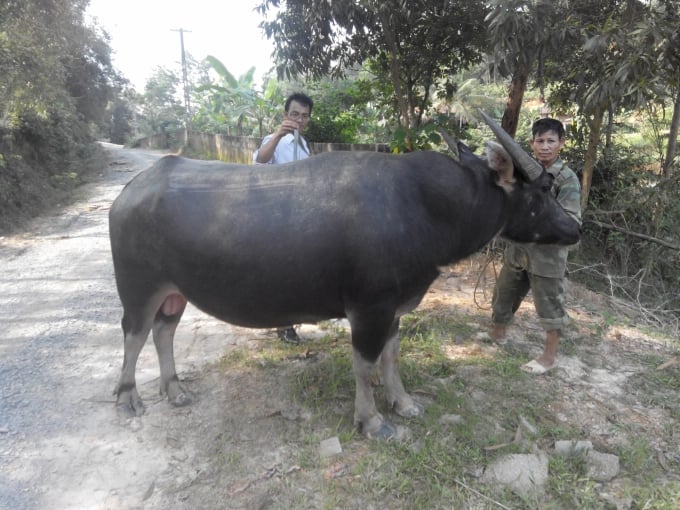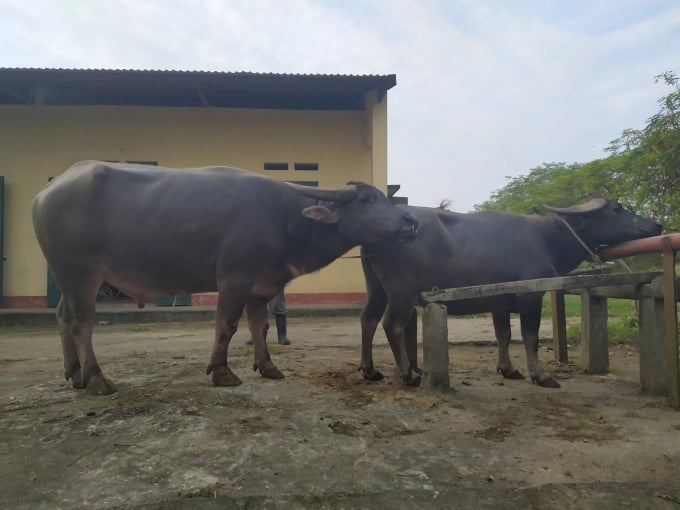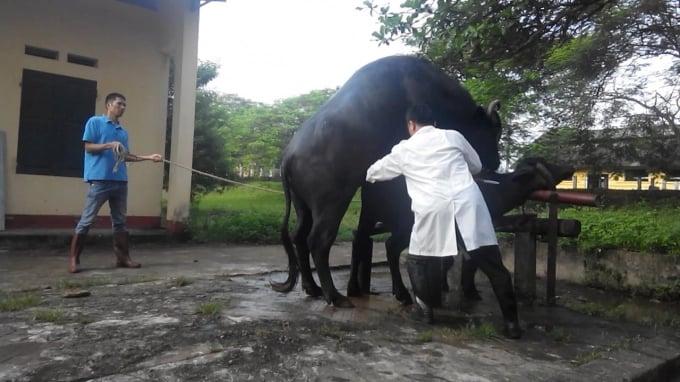November 27, 2025 | 14:45 GMT +7
November 27, 2025 | 14:45 GMT +7
Hotline: 0913.378.918
November 27, 2025 | 14:45 GMT +7
Hotline: 0913.378.918

The demand on raising buffaloes for meat is on the rise in Viet Nam. Photo: ARDC.
The demand on raising buffaloes for meat is on the rise in Viet Nam in recent years.
According to the General Statistics Office, the total amount of buffalo meat reached over 94,479 tonnes in 2019, increasing an average of 2.94 per cent per year since 2016.
The office said the buffalo meat tended to be more popular with consumers in recent years.
Data from the office showed that the whole country now has over 2.3 million buffaloes.
The number of buffaloes in the northern provinces is up to 1.3 million, ranking first and accounting for 55.7 per cent of the total buffaloes in the country while the number of buffaloes in the Mekong Delta is only 23,000 – the lowest number in the country.

: Buffalo meat is believed to have a higher nutritional value and be healthier than beef. Photo: ARDC.
Since ancient times, Vietnamese people have mainly raised buffaloes for plowing.
However, scientists recently said the buffalo meat has the same nutritional value as beef. Specifically, studies revealed that the buffalo meat has water content of 76.6 per cent and protein content of 19 per cent. The buffalo meat is redder than beef and its fat content was bout 2-3 per cent while the fat content in beef was 3-4 per cent.
The buffalo meat’s calories are only 70 per cent compared to the beef’s calories, the buffalo meat’s cholesterol content is also lower than beef but the buffalo meat’s iron content is 15-20 per cent higher than in beef and the buffalo meat’s vitamin B12 content is 8 – 14 per cent higher compared to beef.
The Italians consider the buffalo meat to be a nutritious meat thanks to above features and also because the buffalo meat has a lot of omega-3 fatty acids such as EPA (Eicosapentaenoic Acid) and DHA (Docosahexaenoic Acid). These fatty acids are believed to cure many diseases such as heart disease, cancer and memory loss.
Buffalo fat also contains CLA (Conjugated Linoleic Acid) - a natural trans fat made from bacteria that live in the rumen.
The trans fat is not as toxic as artificial trans fat, it helps in preventing cancer, lowering bad cholesterol (LDL low-density lipoprotein) and fats in the blood and reducing the risk of contracting atherosclerosis and diabetes.
Recently, domestic scientists have started studying about the capacity of raising buffalo for meat.
Documents published by Professor Vu Duy Giang said that buffalo aged 18-24 months old could gain weight of 680-700 gramme daily, nearly equal to crossbred cow for meat.
According to experts, it is necessary to develop a detailed plan of raising buffaloes for meat in Viet Nam now. Both State and private sector’s investment in building infrastructure, importing healthier buffaloes and conducting more research on raising buffaloes for meat are needed in the coming time.
Over the past time, research on selecting and improving breeds of buffaloes for meat have been conducted thanks to direction from the State.
Localities have selected and used healthy female buffaloes, weighing more than 350kg and healthy male buffaloes, weighing over 450kg for insemination to produce healthy baby buffaloes.
At the same time, the male buffaloes are also exchanged between localities to avoid the phenomenon of homogeneity.
As a result, baby buffaloes grow faster and 10-15 per cent heavier than normal baby buffaloes.

Buffaloes at animal Husbandry Research and Development Center for Mountainous Zone. Photo: ARDC.
Besides, scientists at the National Institute of Animal Science, under the Ministry of Agriculture and Rural Development, have also successfully developed artificial insemination techniques for buffaloes.
Thus, the crossbred buffaloes between Murrah buffaloes and domestic buffaloes, have been raised in 10 northern provinces, producing 20-30 per cent of meat higher than domestic buffaloes.
Translated by Bich Huong
/2025/11/26/4909-2-154329_878.jpg)
(VAN) Pearl grouper farming in HDPE cages not only delivers economic efficiency but also contributes to protecting the environment, creating jobs, and promoting marine-based experiential tourism.

(VAN) The model of making a living under the forest canopy through the agroforestry system in Van Son commune, Bac Ninh province, is expected to generate an annual income of approximately VND 30 million/ha.

(VAN) Many enterprises in Can Tho are harnessing natural energy and reducing greenhouse gas emissions in their production processes, thereby contributing to the promotion of a sustainable green transition.
/2025/11/24/3536-2-112800_176.jpg)
(VAN) Dong Nai now has tens of thousands of hectares of forests certified for sustainable management, and this area will continue to be expanded in the coming period.

(VAN) Vinh Ha hamlet (Dai Xuyen commune, Hanoi) is shifting away from small-scale farming as households adopt bioscurity into their breeder chicken models.

(VAN) Heavy rains make aquatic species more vulnerable to disease. Proactive water management and high-tech systems help farmers prevent outbreaks and protect yields.

(VAN) Greenhouses are shifting production mindsets in Binh Lu commune, enabling farmers to ‘weather the sun and rain’ and secure stable vegetable harvests throughout the year.